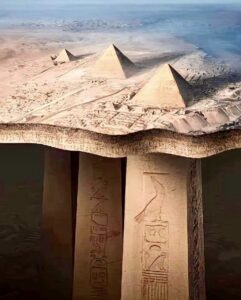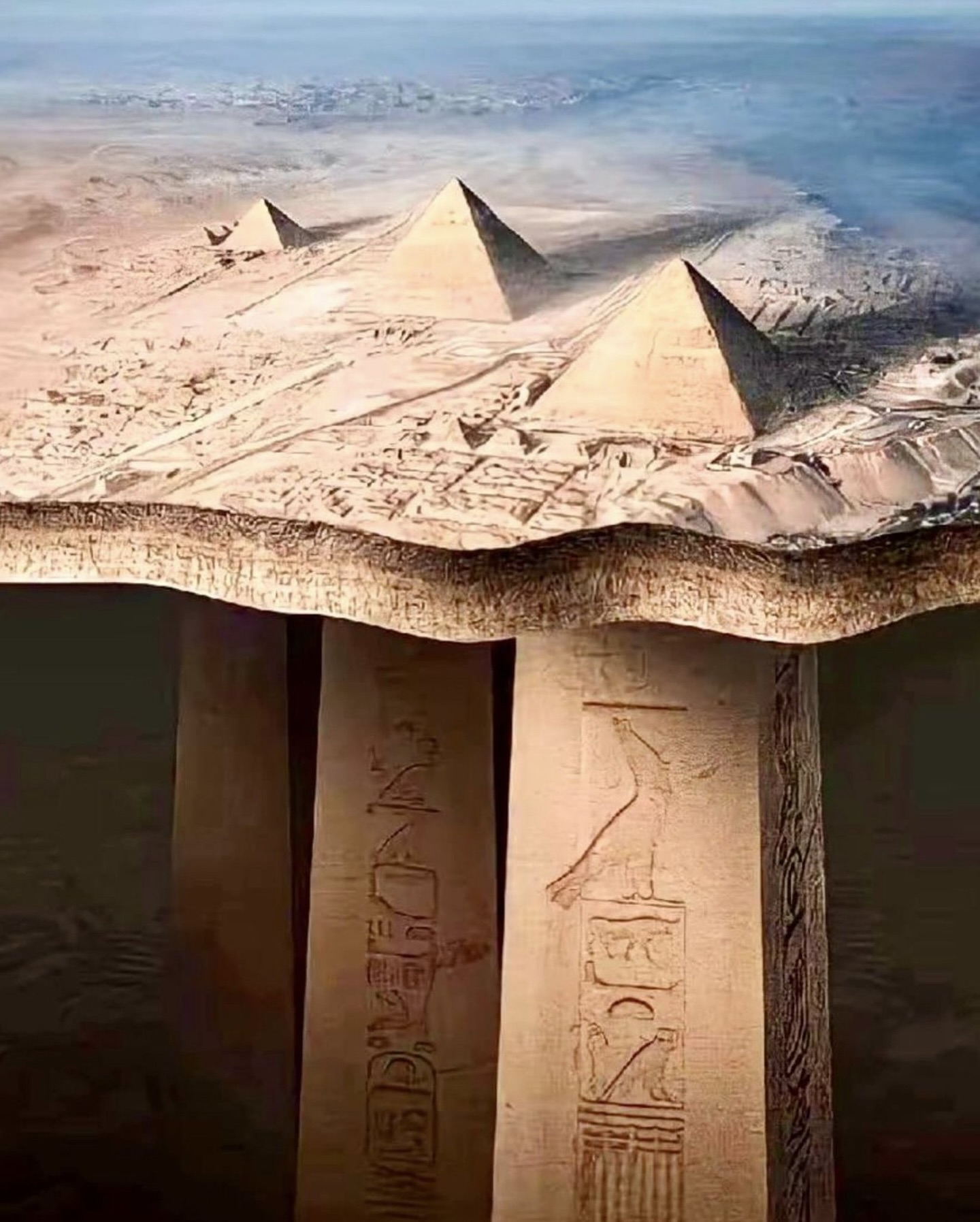
For centuries, the Giza Plateau has captivated archaeologists, historians, and conspiracy theorists alike. Towering above the Egyptian sands, the Great Pyramids have long been shrouded in mystery—monuments of impossible precision, astronomical alignment, and architectural genius far beyond what was believed to be possible for the time. But now, in a revelation that has shaken the foundations of historical academia, researchers in 2025 have uncovered what may be the most extraordinary discovery in Egyptology—and possibly in all of human history.
Using cutting-edge Synthetic Aperture Radar (SAR) tomography, scientists from the University of Pisa and the University of Strathclyde have unveiled an intricate network of colossal underground structures lying beneath the Khafre Pyramid. These are not mere cavities or accidental voids. What the radar scans reveal is a highly organized substructure comprising five multi-level complexes, eight precisely engineered cylindrical wells that plunge an astonishing 648 meters into the Earth, and two vast cube-shaped chambers that stretch across an incredible 2 kilometers. The scope and scale of this find are so unprecedented that many experts are reevaluating everything they thought they knew about ancient Egypt—and even about the origins of human civilization itself.
What makes this discovery even more compelling is the design and depth of these structures. The cylindrical wells are uniform in width and display signs of advanced boring technology, something not remotely aligned with the tools historically attributed to ancient Egyptians. Meanwhile, the cube-shaped chambers suggest a level of engineering mastery that hints at not only intentional design but potentially a function far beyond burial or ritual. If the pyramids were the capstones of this subterranean complex, what purpose did the structures below serve?
Some of the more daring theories propose that these could be remnants of an ancient energy grid—one potentially echoing the visionary ideas of Nikola Tesla. Tesla, a pioneer in wireless energy transmission, often speculated that Earth’s natural electromagnetic frequencies could be harnessed for energy if the right resonant structures were built. In this light, the Giza complex may not have been designed solely as tombs or monuments but as colossal nodes in a global energy network. The precise orientation of the pyramids, their piezoelectric granite cores, and now, these newly found underground formations, all begin to form a puzzle that challenges the mainstream narrative.
Skeptics are understandably cautious, warning against sensationalism. Yet, even the most conservative Egyptologists cannot deny the physical evidence presented by the SAR scans. There is something there, and it is not naturally occurring. The linear symmetry, the geometric regularity, and the unexplained materials found in preliminary core samples from drilled probes indicate intelligent design. If the findings hold under peer-reviewed scrutiny, this could mean that a vastly more advanced civilization either predates the known dynastic Egyptians—or worked alongside them.
The implications are staggering. Such a civilization, possessing the means to drill, construct, and maintain subterranean chambers on this scale, would have had access to knowledge and technologies far exceeding what we attribute to any ancient culture. The construction of these underground systems would require not only advanced mathematics and engineering but also a profound understanding of geology, hydrology, and possibly even electromagnetism.
Moreover, if these chambers do serve an energetic purpose, as some researchers are beginning to suggest, then we may be looking at a global paradigm shift. Were the pyramids ancient power stations? Could they have been part of a long-lost system designed to resonate with Earth’s frequencies? And if so, what happened to this knowledge—and why has it remained hidden for so long?
Another layer of mystery lies in the cultural and historical records. Ancient Egyptian texts are largely silent on such subterranean wonders. However, certain legends and obscure papyri mention the “Halls of Amenti” or underground realms where knowledge and power resided. These were always dismissed as symbolic or mythological. But what if they were literal references to what lies beneath the sand?
And what does this mean for other megalithic sites around the world? If Giza holds such secrets, could similar hidden networks lie beneath other enigmatic locations such as Teotihuacan, Gobekli Tepe, or even Stonehenge? Already, whispers in the archaeological community suggest that similar scanning technologies are being deployed at major ancient sites worldwide. The age of speculative archaeology may be giving way to an era where advanced imaging brings ancient truths to light—truths we were perhaps never meant to rediscover.
As excavation plans begin under strict Egyptian government oversight, the world watches with bated breath. What will we find when we finally enter these chambers? Artifacts? Machinery? Inscriptions in unknown languages? The possibilities are as thrilling as they are terrifying. If proven authentic and functional, the find could trigger not just a rewriting of history books but a reassessment of who we are, where we came from, and what ancient humans—or non-humans—were truly capable of.
For now, all we can do is wait, speculate, and marvel at the sheer scale of what has been uncovered. One thing is clear: the story of the pyramids is far from over. And perhaps, just perhaps, the real history of our world is only beginning to emerge from the shadows of the past.

